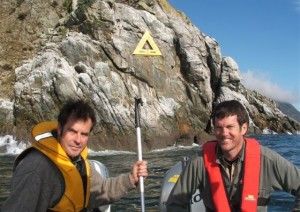
Source: www.doc.govt.nz
There is no denying the beauty of the New Zealand Marine Reserves. However, as alluring as they are, it is not possible to simply sail up to all of them and begin exploring. Many are home to rare forms of wildlife, which require fierce protection to continue existing. While it is not out of the question to visit these reserves, you stand a stronger chance of wandering across others with more freedom. Knowing marine reserves access makes your exploration easier.
Horoirangi Marine Reserve
The Horoirangi Marine Reserve is home to some of the deepest and most vibrant reefs New Zealand has to offer. If you are seeking seals stretched across boulders, you may be disappointed. Hororiangi is very much a divers’ reserve, as these boulders are devoid of life. However, whether you choose to go snorkelling or scuba diving, there is an unusual array of wildlife for you to explore.
One star attraction at Horoirangi is the Ambush starfish. Unlike the sedentary starfish you may associate with other areas, the Ambush position themselves on their legs and stalk the waters looking for prey. Fortunately, this does not pose a threat to the average diver, but it is quite the sight for those looking to observe marine life.
Once you move beyond the boulders that stand between you and the reserve, you can watch out for plenty of birds. This includes blue penguins and shaggy roosts. If staying still isn’t appealing, you can enjoy kayaking, diving, snorkelling, and boating in the surrounding waters.
Getting to Horoirangi is relatively simple. If you drive 12km from Nelson to Glenduan, you can walk along the reserve. If you want to take your boat, you can launch from either Nelson or Mapua.
Fiordland’s Marine Reserves
Not only is Fiordland popular among Marine Reserve visitors, it is a major bioscience research area. There are over 10,000 hectares of marine life there, complete with black coral trees, sponges, and one of the biggest fish varieties New Zealand has to offer.
One of the most astounding aspects of the Fiordland reserves is the 40-metre band, which is an area of marine life that rests 40m below the ocean’s surface. At the top of this freshwater layer, you will find spotted fish and spiny urchins. As you reach the bottom, you can see multiple black coral species. This is an area of historic conservation, owing to the age of some of the coral.
You can reach the Fiordland reserves at the South of New Zealand, at the border of the Fiordland National Park. As there are multiple reserves, checking out a detailed map helps you to determine which one is right for your trip.
TeAngiangi Marine Reserves
The TeAngiangi Marine Reserves rest at the central areas of Hawkes Bay coastline. As an area that is popular amongst the local community, it comes complete with campsites that are within easy reach of useful facilities. This makes the TeAngiangi Marine Reserves particularly accessible for families.
The shallow waters at TeAngiangi stretch out for a little while, which makes it easy for parents to kick back and watch little ones snorkelling from a distance. As a low tide area with beautifully pink coralline, it is both safe and attractive. Thanks to the unique ecosystem there, you can spot both northern and southern sea species. If you’re lucky, you may even see some rock lobsters.
Rock pooling is probably one of the most popular activities available at TeAngiangi. As you guide yourself and your family among the rocks, do make sure you return any you displace to their original position. Doing so helps to preserve the marine life.
